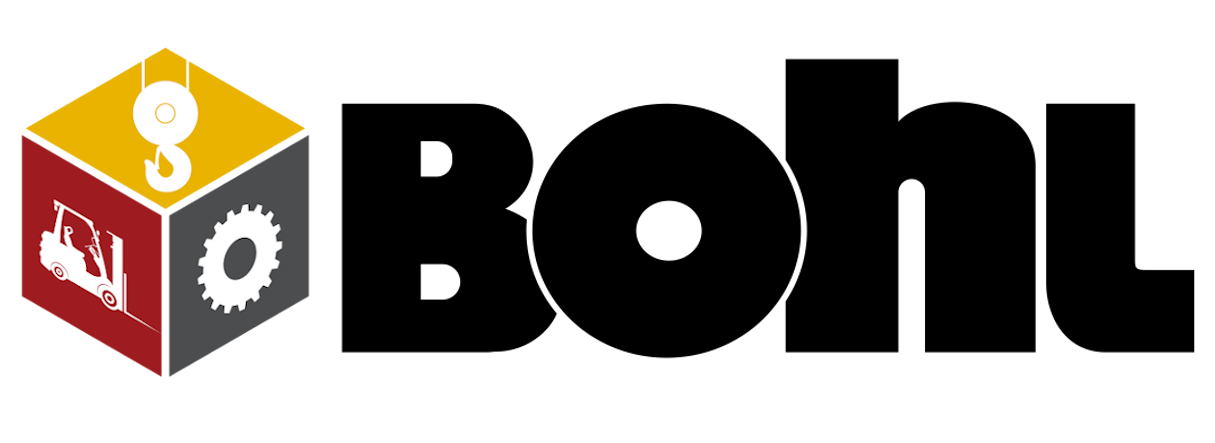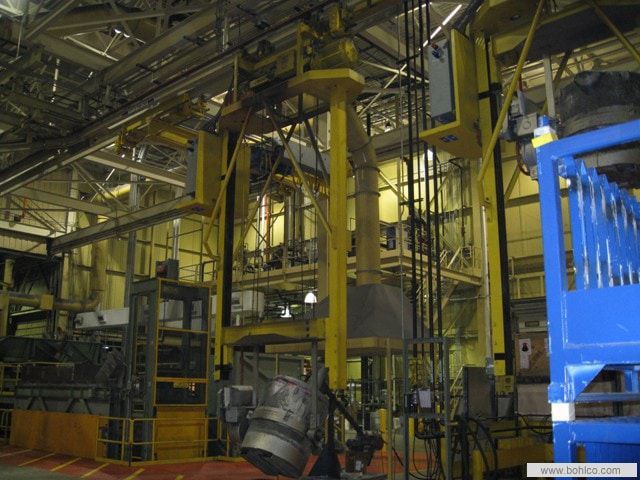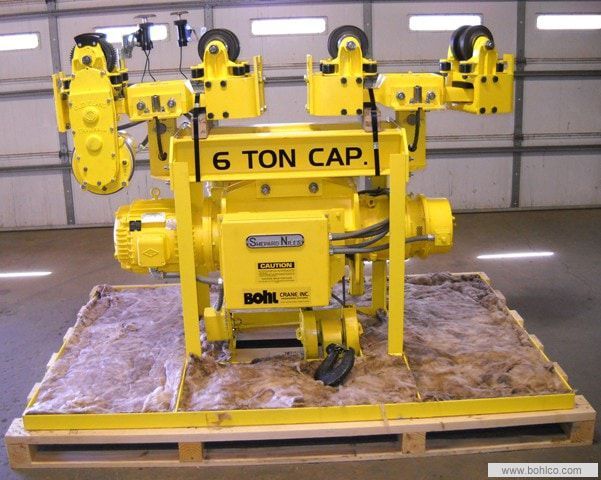
Molten Metal Transportation
In 1926 Bohl Crane started their business by constructing monorails and cranes for foundries. These systems dramatically increased production by moving heavier ladles of molten metal more rapidly and safely. Previously, workers carried the ladles or used carts and dangerous spills were common.
Engineering Experience
As a company Bohl has 83 years of experience and our current engineering teams have nearly 150 years of personal experience between them. During this time we have gained considerable expertise in:
- Designing an efficient system for monorails, cranes, and transfer cards
- Determining efficient roundtrip travel of ladles
- Following government regulations and safety guidelines
- Working with manual, cab operated or automated systems
- Selecting cost effective equipment and designs requiring less maintenance
- Providing experienced installation, start-up, inspections and repairs
Handling System Components
Molten metal handling systems often include the following:
- Ladles to carry the molten metal – manual or motorized pour
- Monorail tracks with curves and switches
- Bridge cranes that transfer loads
- Carriers which travel on a monorail or crane “carrying” a hoist
- Hoists which attach to the carriers and raise or lower the ladle
- Track mechanisms that raise or lower carriers to other elevations
- Transfer cars which travel on rails and carry ladles
- Weighing devices built into tracks, rails, hoists or carriers
- Support steel and foundations for columns
- Controls, conductor bars and field wiring
Bohl Reviews Every Angle
Bohl’s experience is invaluable with considerations such as:
- Demanding requirements of dirt, high heat, fast speeds, duty cycles
- Tradeoff of ladle capacity versus travel speed of carriers
- Molten metal temperature and added chemical requirements to determine ladle capacity, ladle weight and travel times
- Preventing power phase reversals while carriers travel through switches
- Heat shielding
- Safety of personnel
- Analyzing practical limits of automation
- Utilizing proper track – patented or standard structural beam
- Proper suspensions to connect track to support steel
- Suitable monorail conductor bars for reliable current collector tracking
- Designing for ease of future maintenance
The Benefits of Bohl’s Methods
Selected benefits of monorails or bridge cranes provide for the best productivity
- Monorails have limited travel reducing operators’ decisions when positioning loads
- Monorails have fewer components
- Bridge cranes are more adaptable to multiple fill and pour locations and sizes
- Monorails are easier to automate
Why Patented Track?
Why use patented track for the monorail or crane system instead of standard structural beams? The surface of the track where the trolley wheel rides is a hardened alloy steel to withstand the abuse of a foundry where downtime is costly. Standard structural shapes deform or peen quickly from repeated wheel traffic in high production operations and are subject to failure or rapid wear. The bottom flange where the wheels run on patented track come in designated standard widths and thicknesses regardless of the height of beam so that it is far easier to match track to track of various capacities and beams support spans. This is extremely challenging with structural shapes. The standard widths allows for standard design switches and interlocks which lowers cost and allows for common components for future parts and expansions instead of customer designed equipment each time as is necessary with structural shape beams.
Call and ask for a Bohl Crane service representative or contact us online.

Bohl

